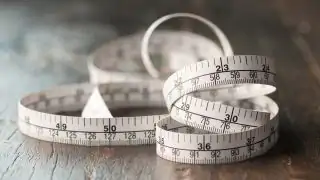For the first time in more than three decades, officials have designated brand-new prefixes that can be applied to units of measurement within the metric system. Four new prefixes — ronna, ronto, quetta and quecto — will allow scientists to quantify the very largest and smallest things in the universe.
The new prefixes were voted in by scientists at the 27th meeting of the General Conference on Weights and Measures (GCWM) (opens in new tab), which was held from Nov. 15 to Nov. 18 at Versailles Palace near Paris in France. The new terms are part of the International System of Units, also known as the metric system, which is the primary measurement system for every country in the world apart from Myanmar, Liberia and the U.S., which all predominantly use the imperial system of measurement, according to the CIA (opens in new tab).
The new prefixes can be applied to any of the seven base units in the metric system: grams (g) for weight; meters (m) for distance; seconds (s) for time; amps (A) for electrical current; kelvin (K) for temperature; moles (mol) for amount of substance; and candela (cd) for luminosity, as well as other units, such as bytes for computing.
One ronna (R) is the equivalent of one octillion of something (10?27 or 1 followed by 27 zeros), whereas one ronto (r) is the equivalent of one octillionth of something (10?minus27 or a decimal point followed by 26 zeros and a 1). One quetta (Q) is the equivalent of one nonillion of something (10?30) and one quecto (q) is the equivalent of nonillionth of something (10?minus30).
Related: Meet the zeptosecond, the shortest unit of time ever measured
This is the first time that new prefixes have been added to the metric system since the addition of zetta (10?21), zepto (10?minus21), yotta (10?24) and yocto (10?minus24), which were all voted in by the GCWM in 1991.
The new names start in 'r' and 'q' because these were the only letters to not be currently assigned in the metric system. The last letter of prefixes for large things is always an 'a' and the last letter of prefixes for small things always ends in an 'o.' The rest of the words are loosely based on the Greek and Latin words for 9 and 10 because the new prefixes are the ninth and tenth largest and smallest prefixes in the metric system.
The main reason for the new prefixes is that data science has advanced so much and there is now much greater need for greater digital storage in computing, representatives of the U.K.'s National Physics Laboratory (NPL), who led the push for the new prefixes, wrote in a statement (opens in new tab).
"In terms of expressing data in yottabytes, which is the highest prefix currently, we're very close to the limit," Richard Brown (opens in new tab), a metrologist at NPL who officially proposed the new units at the GCWM meeting, told French news agency AFP (opens in new tab). It won't be long before computer scientists need to start storing data in ronnabytes and then quettabytes, he added.
—Physicists measure the tiniest gravitational force ever
—Why do we still measure things in horsepower?
—Physicists get closer than ever to measuring the elusive neutrino
The new prefixes for large things — ronna and quetta — are also the perfect scale to help astronomers to neatly weigh planets, Brown said. For example, Earth weighs approximately 6 ronnagrams and Jupiter weighs in at around 2 quettagrams, he added.
The inclusion of the prefixes for tiny things — ronto and quecto — is required to provide balance to the scales. "At the bottom end, it makes sense to have a symmetrical expansion," Brown said. The new measurements could also be helpful for researchers in fields like quantum and particle physics, where scientists measure really small things, he added.





